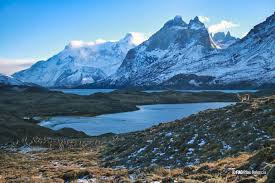Biodiversity Hotspots in South America: Conservation Innovations and Threats
South America is renowned for its rich and diverse ecosystems, making it one of the world's most remarkable regions in terms of biodiversity. From the Amazon Rainforest to the Galapagos Islands, this continent boasts an array of unique and irreplaceable species that contribute to its ecological significance. However, despite its natural wonders, South America is facing numerous challenges in terms of conserving its biodiversity hotspots. In this article, we will delve into the contemporary issues surrounding climate and environment in North and South America, highlighting both the innovative conservation efforts and the threats these hotspots face.
-
The Amazon Rainforest, the largest tropical rainforest in the world, is a critical biodiversity hotspot in South America. It is home to countless species, many of which are found nowhere else on Earth. However, deforestation rates in the Amazon have been alarmingly high, driven by activities such as logging, agriculture, and infrastructure development.
-
The Pantanal, the world's largest wetland, is another important hotspot in South America. This vast area is home to a remarkable array of aquatic plants, birds, mammals, and reptiles. However, the Pantanal is facing threats such as habitat loss, pollution, and climate change, which are affecting the delicate balance of this unique ecosystem.
-
The Andes Mountains, stretching across multiple countries in South America, are also a hotspot for biodiversity. The high altitude and varied climate in this region have created diverse habitats that support a wide range of plant and animal species. However, human activities such as mining and deforestation are causing habitat destruction and endangering the species that call the Andes home.
-
The Galapagos Islands, located off the coast of Ecuador, are famous for their unique wildlife and played a crucial role in Charles Darwin's theory of evolution. However, invasive species and tourism-related pressures threaten the delicate balance of this fragile ecosystem.
-
Conservation innovations are emerging as a crucial tool to protect these biodiversity hotspots. Efforts such as establishing protected areas, implementing sustainable land-use practices, and promoting eco-tourism are helping to mitigate some of the threats faced by these regions.
-
The Yasuni National Park in Ecuador is an excellent example of conservation innovation. This park is one of the most biodiverse places on the planet and is home to indigenous communities. The government has implemented a unique initiative, the Yasuni-ITT Initiative, which aims to leave the oil reserves in the park untapped in exchange for financial contributions from the international community. This innovative approach aims to protect both the environment and the rights of indigenous people.
-
Community-led conservation efforts are also gaining momentum in South America. Local communities are increasingly taking charge of protecting their natural resources and participating in sustainable development initiatives. These efforts not only enhance biodiversity conservation but also contribute to the well-being of local communities.
-
Climate change poses a significant threat to the biodiversity hotspots in South America. Rising temperatures, changing rainfall patterns, and increased frequency of extreme weather events can disrupt ecosystems and lead to the loss of species. It is crucial to address climate change and reduce greenhouse gas emissions to safeguard these valuable habitats.
-
The conservation of biodiversity hotspots requires international collaboration and cooperation. North and South America must unite their efforts to protect these invaluable ecosystems. Sharing knowledge, resources, and best practices can lead to more effective conservation strategies.
-
Education and awareness play a vital role in promoting conservation. By learning about the importance of biodiversity hotspots and the threats they face, individuals can make informed choices and take action to protect these ecosystems. Schools, universities, and community organizations can play a crucial role in raising awareness and inspiring future generations to become environmental stewards.
-
Governments have a significant role to play in biodiversity conservation. Strengthening environmental laws, enforcing regulations, and providing financial incentives for conservation efforts can help protect biodiversity hotspots in South America.
-
Sustainable development is essential for the long-term preservation of biodiversity. Balancing economic growth with environmental protection requires innovative approaches that prioritize conservation and promote sustainable practices in sectors such as agriculture, tourism, and energy.
-
Collaboration between scientists, policymakers, and local communities is crucial for effective conservation. By combining scientific knowledge with traditional ecological knowledge, stakeholders can develop holistic and inclusive approaches that address the complex challenges faced by biodiversity hotspots.
-
As individuals, we can also make a difference. By reducing our ecological footprint, supporting local and sustainable products, and advocating for conservation policies, we can contribute to the protection of biodiversity hotspots.
-
In conclusion, the preservation of biodiversity hotspots in South America is a pressing and complex challenge. However, through innovative conservation efforts, international collaboration, and individual actions, we can ensure the survival of these unique ecosystems for future generations. Let us come together as North and South Americans to protect our shared natural heritage and create a sustainable and harmonious future.
Don't forget to share this article and join the conversation about #SouthAmericaConservation and #BiodiversityHotspots. Together, we can make a difference!







